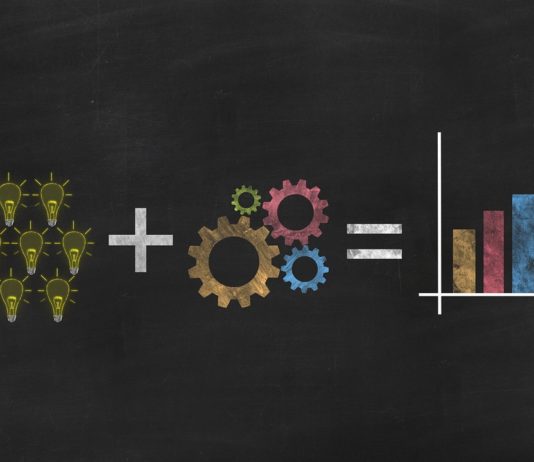Mitigating Risk & Delivering Value – Building Transparency, Resilience & Optimising Your Supply Chain.
Globalisation has become an undeniable part of commerce over the last few decades. As both large and small companies have moved to source labour and parts from around the world, supply chains have changed to keep in step. In the attempt to obtain goods most efficiently and cost effectively, products may pass through numerous countries en-route to the customer. Processes have become more complex as a result, evidenced by the growth of transportation and logistics companies that service the transportation needs.
We take for granted those services and resources that are delivered to our door-step, day in and day out, much like the utilities services – water, gas, electricity, internet. We only become consciously aware of their presence when the service is disrupted. Everything that you consume or use, has been part of a continuous supply chain; from the point of production to the point of disposal and everything in-between. When things all run smoothly, all is good, until the supply chain breaks down for one reason or another.
- Natural disasters – Floods, hurricanes, drought
- Geopolitical factors – Sanctioned countries and suppliers
- Change in regulations – GDPR,
- IT failures – TSB Banking failures, British Airways, HSBC,
- Cyber-attacks – WannaCry, Meltdown & Spectre
- Unexpected supply and demand – CO2 reduced supply
- Logistic management failure – Chicken for KFC

If you are thinking, “Well, what’s this got to do with me?”, well, I guess, nothing, until the effects of a break in the supply chain manifest themselves and then they might have a direct impact on you. However, if you are working in any manufacturing or services company, then supply chain management is of great relevance to you. This blog describes a supply chain and suggests some key steps in understanding and ameliorating the supply chain.
Firstly, what is a Supply Chain?
A supply chain is a collection of suppliers and the delivery logistics necessary to create and deliver a specific product or service for an organisation. The chain is made up of nodes and “links” that can include multiple suppliers of components, the completed product/service, the warehouse where it is stored, the distribution centres, and finally, the store where a customer can purchase it.
The concept of the ‘chain’ is important, because each link is connected in a specific direction and order, and the next link cannot be reached without going through the previous one. Each link adds time and costs, and can involve labour, parts and transportation. Every product that a company carries may have its own supply chain, though they may use certain suppliers for multiple products. However, a chain is only as strong as its weakest link, so when one link breaks the whole supply chain has failed to deliver. Any procurement and supply team that does not have a good understanding of its supply chain (and be capable of identifying, mitigating and avoiding risk), is itself a major cause of risk for the organisation. So, what can a procurement and supply team do to help itself?

Key steps in understanding and improving the supply chain
- Align the supply chain to meet the imperatives of the enterprise; the supply chain needs to understand the goals and objectives of the enterprise and align itself and its supply chain appropriately to achieving and delivering against the defined goals
- Link supply chain capabilities and attributes to functional capabilities: This involves creating linkages between Supply Chain capabilities, and cost, speed and service attributes to core functional capabilities.
- Map Process Steps and Information Flows
- The first step, here is to document and graphically model the supply chain processes, participants, and information flows and map the processes to the supply chain capabilities.
-
- The next step is to walk-through and audit steps in the processes, looking for weakness, mis-alignment and potential pinch-points. the processes are re-configured and optimised as necessary, to meet service level requirements and build in resilience.
The well-publicised supply chain issues experienced by KFC in the UK highlight the importance of ensuring that businesses’ supply networks are sufficiently robust and able to guarantee delivery of vital goods and services in difficult conditions. To build a robust supply chain, businesses need to implement strategies that build resilience. Resilient supply networks provide continuity of service to customers or businesses upstream, either due to the availability of alternative suppliers, or because the primary providers are better placed to recover following a damaging event.

4. Align internal and external stakeholders to execute processes and actions to deliver value
It’s not just enough to understand your immediate supply chain, but you also need to understand your suppliers supply chain, i.e. the end-to-end supply chain. This involves supply management leadership, communication and collaboration, to align stakeholders on the specific processes, actions and appropriate metrics necessary to successfully execute and deliver value through the entire supply chain.
So, the old idiom “If it ain’t broke, don’t fix it” is inviting failure, when it comes to modern-day supply of goods and services that need to be managed effectively in a supply chain. To mitigate risk and achieve service levels you need to understand your supply chain, make it transparent, and build in resilience.
Sandhill show you how to mitigate risk in your supply chain through building transparency, resilience and optimisation in our online webinar.
